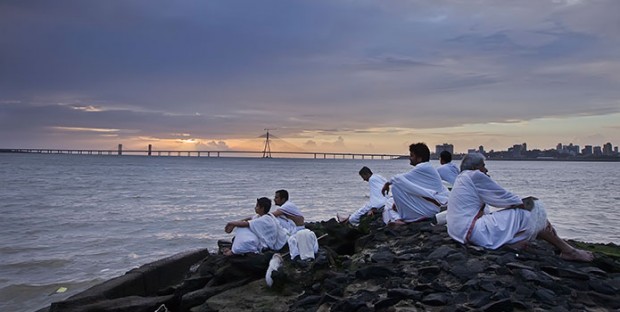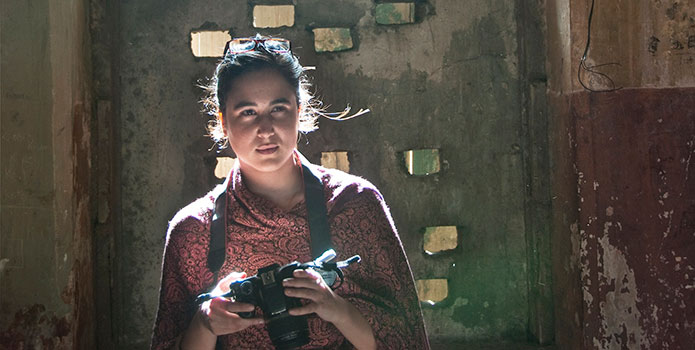The opening title explains that the Ship of Theseus was replaced, piece by piece, and rebuilt into a new ship – therefore the questions is asked: which ship is the real Ship of Theseus? And we’re off and running. Ship of Theseus, a striking first feature by Anand Gandhi, a Mumbai-born playwright, tells three parallel stories of organ transplants and the ethical, personal, religious and economic decisions behind each instance. Following Aida El-Kashef as an Egyptian artist who looses her sight, Neeraj Kabi as a monk battling animal testing facilities who fully intends to die without treatment and a stockbroker (Sohum Shah) who receives a kidney transplant and accidently stumbles across an underground organ trade, following the trail back to the NGO in Sweden.
The film is told in three somewhat short films, the highlight its first: the story of an artist making images with assistance of 3D printing, and voice-over assistive devices. Coming to the city of Mumbai, she instinctively snaps photographs as if to document the world for herself. She lives with her boyfriend who assists although she remains the final arbiter of her practice, arguing with him over a photograph she intends to discard.

The second story of a devout monk opens as a court procedural. He has taken a cosmetics company to court to seek a ban on testing products on animals – although he has given himself to a higher calling of protecting nature and remains an atheist concerned with this preservation. Each character goes on a quest – one external, one internal, and in the case of the stock broker, international a it represents the various truths of Mumbai – an ever-expanding vibrant city.
The advantage Gandhi has over the Bollywood vision of Mumbai is a focus on the complete city, rooted more so in its growing middle class. As a form of escapism, Bollywood lately focuses mostly on the wealth and power created in those newly created towers, where everyone wears designer clothing, a Sex & The City fantasy if you will. Theseus remains grounded in its search for the truth as Mumbai itself borrows elements of other cities, and seen in the backdrop of Toronto — itself ever expanding — it feels accurate.

The artist struggles to make sense of these images of a place she can only imagine, while the monk struggles to preserve the morality and the stockbroker exposes the ethics of transactions, often leading to the poor getting the raw deal. The film is shot with a low-budget aesthetic that does not call attention to itself, with a mostly desaturated palette. It overextends at 139 minutes, leading with its most fascinating story, an analog to the modern science behind filmmaking, where you can dial in color values and looks — the kind of filmmaking that perhaps made a lower budget non-Bollywood film like this possible.


